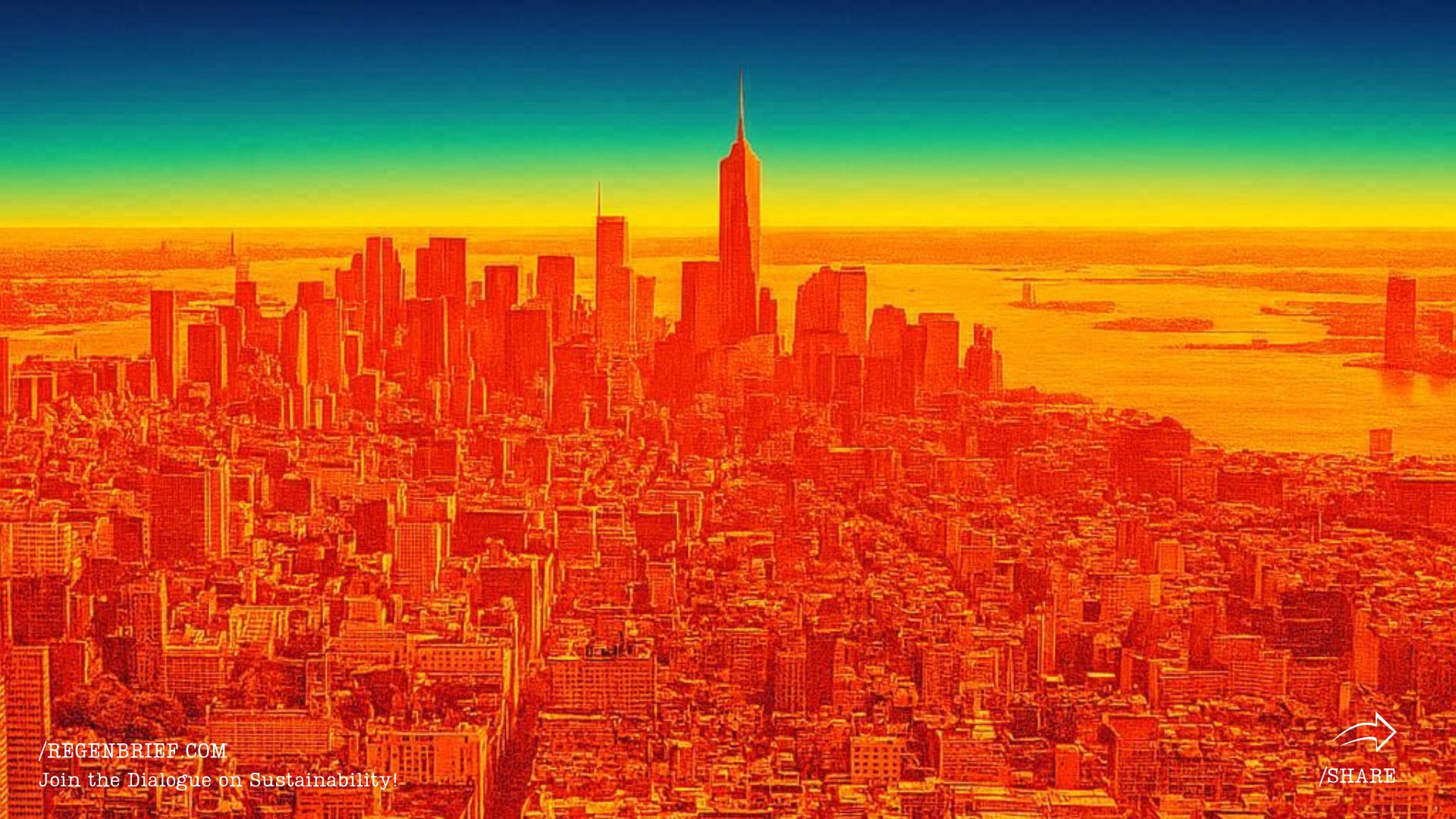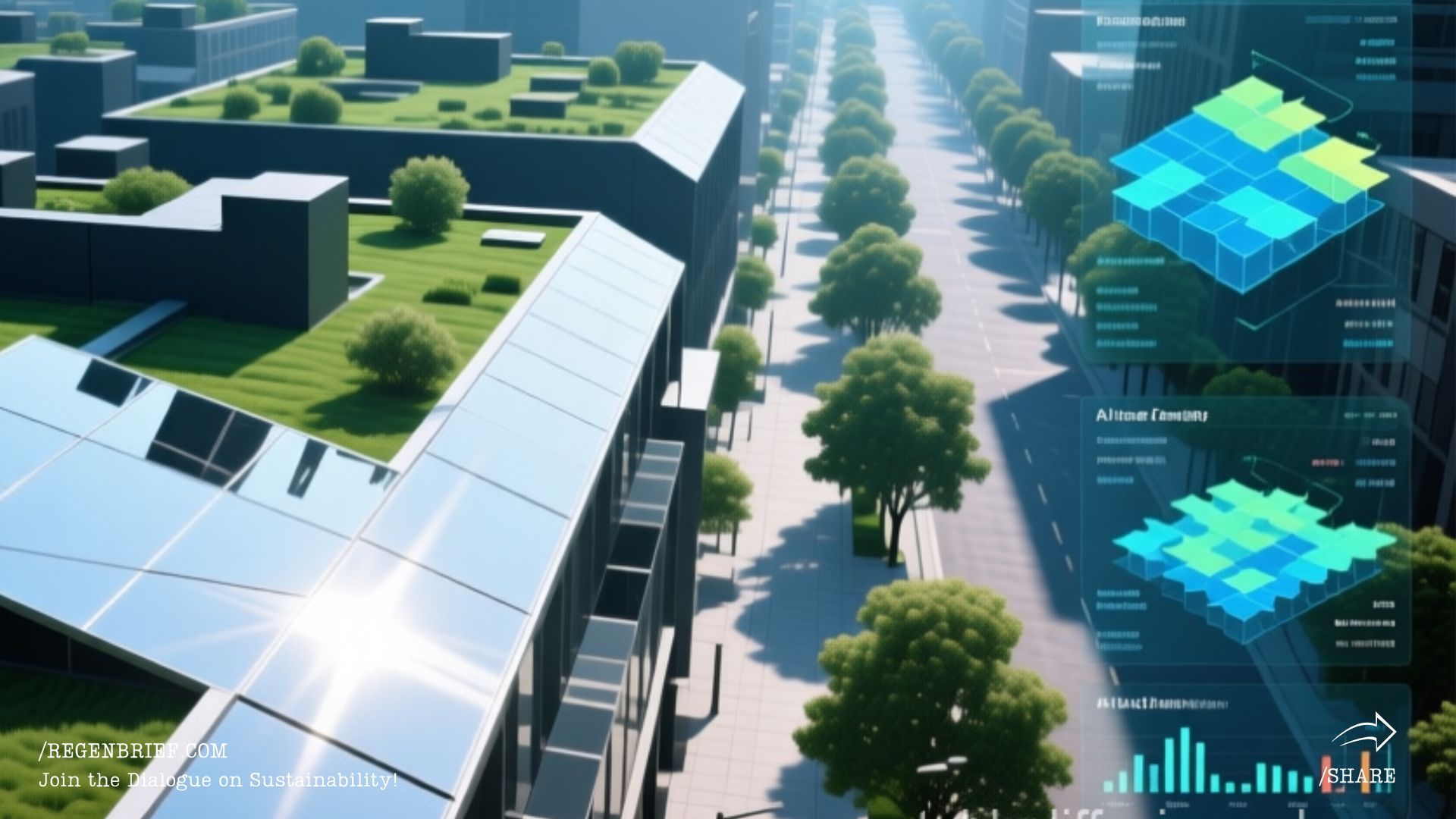- The Regenerative Brief
- Posts
- Cities That Breathe | Part 1: The Hidden Heat
Cities That Breathe | Part 1: The Hidden Heat
Cities can run up to 22 °F hotter than nearby rural areas. That’s like turning an entire downtown into a slow-cooking oven, day after day.

Read Time: 5 minutes | The Hidden Heat
"We shape our buildings; thereafter they shape us"
Dear RegenBrief reader,
Step outside on a July afternoon, and you will feel it before you see it.
The shimmer above the asphalt. The hot gust from a bus exhaust. The sting of sunlight bouncing off glass.
This is the Urban Heat Island in motion: an invisible blanket woven by millions of small decisions like paint color, roof material, road width, tree cover, and air-conditioning exhausts.
Individually, they seem trivial; together, they turn the city into a slow-burning furnace.
The Mechanism | How We Engineered a Fever
Cities absorb more heat than they release because almost everything in them was built to capture rather than reflect energy.
Dark surfaces: Asphalt and tar roofs reflect as little as 5 percent of sunlight, the rest becomes stored heat.
Thermal mass: Concrete and steel hold heat through the day, releasing it long after midnight.
Lost evaporation: When vegetation disappears, so does evapotranspiration, the planet’s natural cooling system.
Waste heat: Engines, data centers, and chillers dump extra warmth into already stressed air.
Urban canyons: Tall buildings trap radiation and block breezes that could flush the heat away.
Each factor on its own feels manageable. Together they rewrite the city’s energy balance, absorbing by day, radiating by night, refusing to cool.

Every extra degree changes urban life:
Energy: 5–10 % more electricity use for each 1 °C rise.
Health: More heat stress and breathing issues.
Air quality: Warmer air forms more ground-level ozone.
Economy: Higher cooling bills and faster infrastructure wear.
The fever spreads quietly. For every single degree Celcius that average temperature rises, electricity demand jumps 5 to 10 percent.
Hospitals see higher admissions for dehydration and heat stroke.
Ozone levels climb as heat speeds chemical reactions in polluted air.
Roads soften, rail lines buckle, crops at the urban edge fail.
In the United States, heat is already the deadliest weather hazard, killing more people each year than floods or storms.
In the Gulf region, where summer peaks touch 50 °C, the danger is magnified by humidity and dense populations.
Yet our response remains reactive: add more cooling, build thicker walls, run the chiller harder.
And here’s the loop: more air conditioning = more waste heat = hotter tomorrow.

The Shift | Design as Therapy
If heat is a design problem, it demands a design-led cure.
Cities around the world are beginning to treat temperature as infrastructure, something that can be measured, mapped, and managed like water or traffic.
Reflective materials: Cool-roof coatings can drop surface temperatures by 30 to 40 °F.
High-albedo pavements: Light-colored and permeable blocks lower street heat and reduce flooding.
Urban forestry: A 10 percent increase in tree canopy can cool air 2 to 9 °F while filtering particulates.
Water features: Even shallow fountains create localized cooling through evaporation.
The next frontier is digital: AI-enabled urban heat mapping.
Tools such as Google’s Tree Canopy Lab and Dubai’s GIS dashboards combine satellite data and IoT sensors to reveal thermal hotspots down to the street corner.
Planners can now decide where a tree or reflective surface delivers the highest comfort return per dirham.
The Frontier | Cities Rewriting Their Climate
Singapore enforces a “landscape replacement policy.” Every square meter built vertically must reappear as greenery somewhere on the site.
Phoenix, Arizona launched a citywide Heat Ready Plan with dashboards tracking shade, cooling stations, and heat-related health calls.
Vienna redesigns schoolyards with porous ground, climbing plants, and misting arcs that turn playgrounds into cool refuges.
Abu Dhabi is testing reflective road materials and AI traffic-heat sensors that adjust lighting intensity to cut radiant load.
These projects mark a shift from mitigation to regeneration: design that not only reduces harm but actively improves local climate health.
Your Move | Start Cooling Consciously
Audit the surfaces you control. Light colors, shade sails, and green patches make a measurable difference.
Plant for function, not decoration. Native trees survive heat with less water and cool more effectively than ornamentals.
Support heat-data projects. Publicly available temperature maps build accountability for better design.
Rethink the AC loop. Every ton of mechanical cooling adds outdoor waste heat; insulation and shading are cheaper fixes.
Champion policy nudges. Cool-roof codes and green-cover ratios cost little and scale fast.
Systems Note | The Economy of Cool
Urban heat is not only a climate story; it is an economic and equity story.
Low-income districts often have the least tree cover and the most heat exposure, driving higher bills and health risks.
Cooling cities equitably means aligning infrastructure spending with social resilience.
Every planted corridor, shaded stop, or reflective roof is also an investment in public health and productivity.
Closing Thought
Our cities are running a fever we designed into them.
If we can map it, we can mend it, and design is the medicine.
Next week in Cities That Breathe – Part 2 we will zoom in to the microclimates hidden inside every street and see how tuning local wind, shade, and water can cool entire neighborhoods.
Let Us Help You Lead the Shift
Whether you're in strategy, ESG reporting, operations or innovation—
This is your moment to shape not just a better business, but a better future.
Curious where regeneration fits into your model?
Let’s explore the possibilities together.
This isn't about saving trees.
This is about saving the conditions that make business possible.
This is regeneration.
